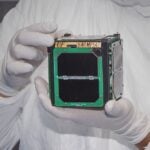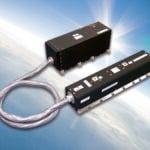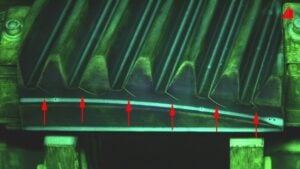NASGRO
Inducted In: 2023, Computer Technology
NASGRO is a software analysis tool that was originally developed by NASA over forty years ago. In 2000, NASA entered into a Space Act Agreement with the Southwest Research Institute (SwRI) with the goal of turning the system into a significant commercial product. That agreement is still in place, and NASA and SwRI continue their partnership to manage and update the system performance.
The NASGRO system is a sophisticated fracture-mechanics analysis software package designed to predict fatigue failure in mechanical systems. A fatigue failure can occur when an object is subject to vibrations or repeated stressing – what engineers term cyclic loading. Over time, repeated cyclic loading can induce small cracks to form. Once a crack is initiated, each additional loading cycle can cause the crack to grow larger. Ultimately, the small crack can grow large enough that the component will fail.
Fatigue failures are a major concern in industries that have equipment running for long periods of time. Aircraft, manufacturing equipment, energy-producing gas turbines, and many other types of industrial equipment must incorporate protection against fatigue failure into their systems.
For NASA, in the early years, fatigue failure was not as great a concern. Spacecraft and other components designed by NASA were typically not subject to repeated stresses because most of the equipment was only used once. A spacecraft had to be designed to survive the rigors of a launch into the atmosphere, but it only had to do it one time. That all changed with the Space Shuttle Program.
From the outset, the Shuttle design specifications stipulated the vehicle should last for 100 missions. In addition, it was the first NASA vehicle that was designed to be a combination launch vehicle, aircraft, and spacecraft. To ensure the safe operation of this type of vehicle, NASA knew they had to incorporate protective measures against fatigue failure.
An additional impetus came from outside of NASA. In the late 1980’s there were two separate incidents of commercial aircraft crashes that were both ultimately attributed to fatigue failure. This led the aircraft industry to focus more intently on ways to predict fatigue failure and to design aircraft to lessen the risk of catastrophic failure should it occur.
Related Technologies

Beowulf Computing Cluster
Inducted In: Communications Technology, Computer Technology, Featured, Industrial Productivity/Manufacturing Technology
A Beowulf Computing Cluster is a grouping of off-the-shelf computer hardware networked together with fast communication software. The resulting parallel processing power of the collection generates processing speeds faster than most super-computer systems used for complex processing – at a…

CubeSats
Inducted In: Computer Technology, Featured, Industrial Productivity/Manufacturing Technology
The origin story of the CubeSat idea is clear-cut and well-known. It was conceived by two engineering professors as a teaching tool for students to get hands-on experience with satellite functionality. In the 1990’s Professor Robert Twiggs was teaching engineering…

Traveling-Wave Tube Amplifier
Inducted In: Communications Technology, Computer Technology, Featured
First developed in the 1930s, Traveling-Wave Tube Amplifiers (TWTAs) were designed to amplify radio frequency signals. It was in the early 1960s that NASA and L3 teamed up to evolve the technology so it would meet the transmission needs of…

